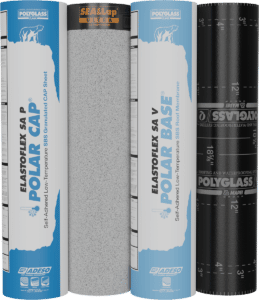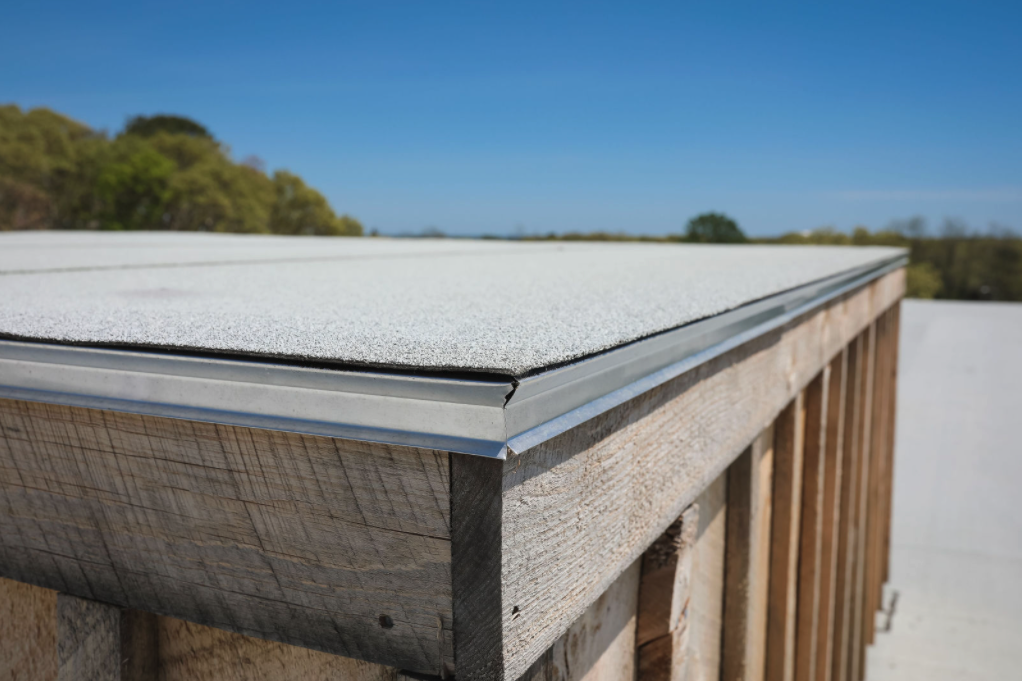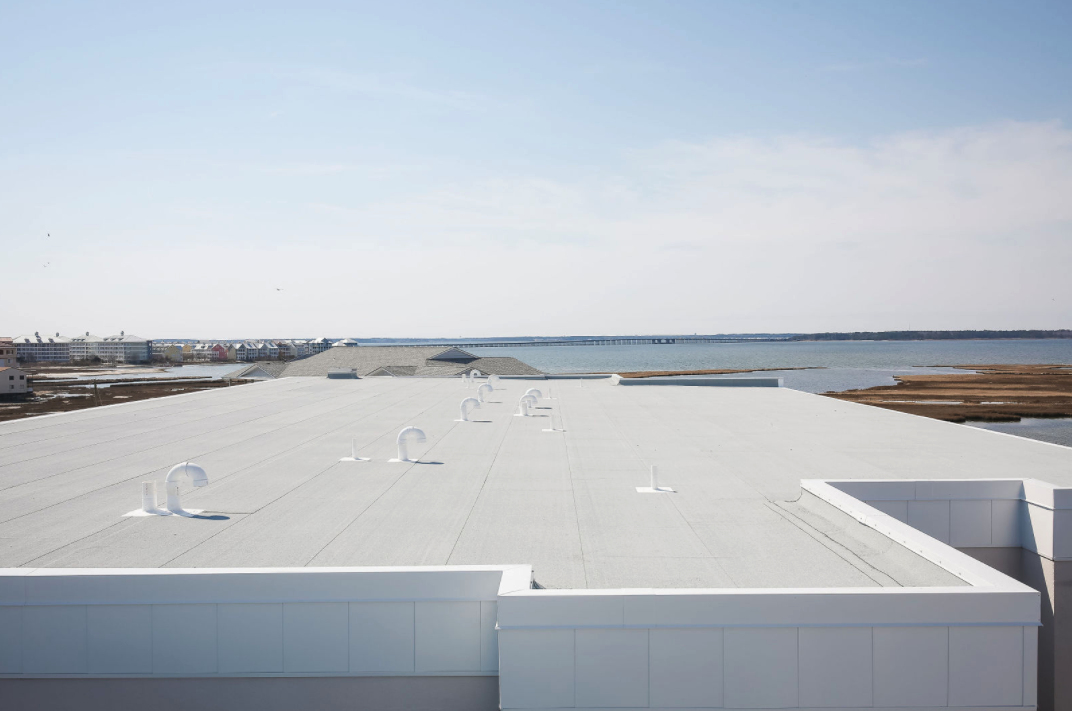Seasonal weather conditions pose several challenges to low-slope roof installations and repair work. The daily stress of the natural elements also causes constant wear and tear to existing roofing systems. How can you best keep your low-slope commercial or residential roof as damage-free as possible during the cold winter months?
This blog explores the Polyglass low-slope roof membranes and products uniquely designed for colder-weather climates and applications.
All In A (Cold) Day’s Work—Top Roofing Challenges
The weather plays a vital role in the success or failure of a roofing installation or repair project. Local climate temperatures on either side of the spectrum (whether too hot or too cold) can adversely affect a roofing system due to the high probability of condensation in extreme conditions.
While low humidity and high heat create an optimum environment for adhesive curing, high humidity levels at any stage of the installation process cause condensation on adhesive membrane surfaces, extending the time needed for adhesives to dry.
Condensation leads to the inadequate bonding of surfaces needing to bind together and impacts material seam welds and the roofing substrate. As a result, the system performance and lifespan of a low-slope roof are also affected.
Low Temperatures Pose Other Problems as Well
Any rain, dew, ice, frost, or snow on the roof can delay or even prevent repairs or new installations. When temperatures are below the ambient temperature range (40°F–45°F/ 4°C–7°C), materials also need to be stored appropriately to stay warm. Too-cold temperatures or wind chill cause products to stiffen, making the application process difficult. Cold weather conditions can also cause stress cracking of materials as they are unrolled.
Common Shortcuts Create More Issues Than They Solve
While it may be tempting for contractors or installers to look for workarounds to get a job done regardless of the weather, shortcuts can work against the roof’s performance in the long run.
- Overheating asphalt to stay hot enough for adequate bonding can cause the oils to evaporate and the material to become brittle and hard. Exposing the asphalt to high heat over a prolonged period expedites the effect, giving way to cracking and an inability to seal.
- Asphalt fumes are also dangerous, putting those who work with it at risk of headaches, fatigue, sensitization, throat and eye irritation, reduced appetite, and coughing.
- Using economy-grade products is another way contractors take shortcuts. Though they may appear to do the same job as premium ice and water shields, they may not offer as much protection from extreme elements.
- Because of its organic components, felt roofing membranes like tar paper are less sun- and wind-resistant than other underlayment systems. This is because of how the material dries out in the heat.
- Felt also weighs more, and when exposed to humidity and heat, it deteriorates at a faster rate.
The solution is using roofing materials that are designed for cold-weather applications.
Polyglass’ SBS Modified Bitumen Membranes for Cold Weather Use
Cold climates are no match when you have the right product on your side. Polyglass’ Elasoflex SA V Polar Base® membranes and Elastoflex SA Polar Cap Sheets® help roofing contractors and installers face cold-weather roofing challenges head-on.
Both the Elastoflex SA V Polar Base membrane and Elastoflex SA P Polar Cap sheet are designed for use at below ambient temperatures (between 25°F–60°F/-4°C–16°C) as an effective defense against harsh elements and humidity. The Elastoflex SA V Polar Base membrane is manufactured using patented ADESO® Technology. It features a strong woven polyester mat with high-performance fiberglass reinforcement to create a stable and insulated roofing system. This mat enhances tear strength and puncture resistance, creating a robust solution against natural forces on the rooftop. Polyglass’ self-adhered (SA) technology removes the need for torches, hot asphalt, or bonding adhesives on the job site.
Elastoflex SA P Polar Cap is a granule surface that is also self-adhered, using SBS dual-compound SA technology, and an ideal solution for low-slope roofing. The reinforced polyester mat is excellent in preventing tears and punctures from forming.
Watch our short video below on the top advantages of our Polar Base membranes and Polar cap sheets.
When the Elastoflex SA P Polar or other approved Polyglass self-adhered cap sheets are used with the Elastoflex SA V Base, the benefits increase, which include:
- Impeccable adhesion and stability
- Cleaner application,
- Shorter installation times
- UV-stabilized and long-lasting
Cold Weather Roofing Projects Using Elastoflex Polar Membranes
MARTHA’S VINEYARD STORAGE FACILITY: When a new construction storage facility on the Massachusetts island of Martha’s Vineyard needed a new roof that could withstand the occasional hurricanes and Nor’Easters that affected the area, Polyglass’ Elastoflex roofing system was the product of choice. Read more about the project here.
TRITON’S TRUMPET CONDOMINIUMS: The Elastoflex roofing product line was also used to repair significant roof damage to two buildings at the Triton’s Trumpet Condominiums in Oceans City, Maryland, after Tropical Storm Isaias hit in 2020. Find out why here.
Enjoy Increased Efficiency During Cold-Weather Installations and Repairs
Cold weather roofing membranes can provide excellent resistance against severe weather conditions. To stay one step ahead and prevent unnecessary costs for repairs, it’s worth investing in premium products and solutions.
Polyglass’ expansive product line provides first-rate coverage for any challenge you may have with your roofing application. Our Elastoflex Polar base and cap sheets are specially formulated for cold-weather installations.
For technical questions regarding which systems are best for your project, reach out to our team of experts.



